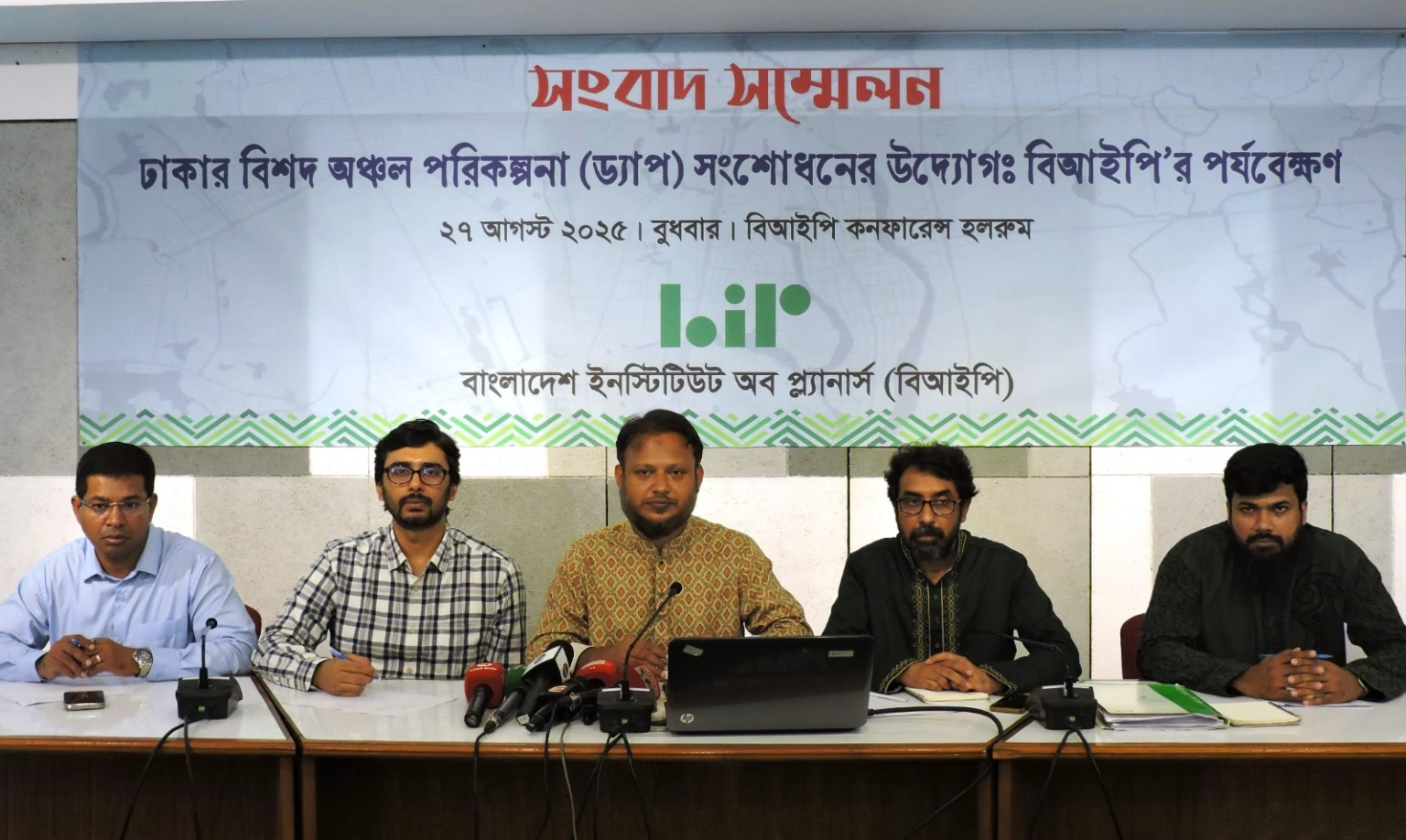The Bangladesh Institute of Planners (BIP) has warned that the government’s recent move to increase the Floor Area Ratio (FAR) for building construction in most parts of the capital, in response to demands from real estate developers, will further endanger the livability and overall environment of Dhaka.
The organisation expressed its concerns at a press conference on Wednesday, held in response to the government’s initiative to amend the Detailed Area Plan (DAP) of Dhaka.
“By ignoring the opinions and demands of planners as well as various social, environmental, professional, and civic organisations, the government is pushing ahead with this amendment. As a result, the number of high-rise buildings in this already densely populated city will increase, and in an already stagnant Dhaka, transportation, utilities, and all types of urban services will come under unbearable pressure,” said the organisation’s president, Adil Muhammad Khan.
He added that the city simply does not have the capacity to absorb such pressure, saying, “Such initiatives will push the livability of central Dhaka to the brink of destruction.”
“To ensure balance and order in residential neighborhoods, a maximum height limit for buildings must be established. To guarantee public safety and minimise the risks of fire accidents, approval for high-rise buildings along narrow streets must be stopped. Moreover, buildings above six stories should be considered high-rise, and the Building Construction Regulations should be amended to ensure mandatory fire safety and preventive measures,” said Professor Adil Muhammad Khan.
He explained that RAJUK published the Detailed Area Plan (DAP) in gazette form in 2022, after a long wait. The plan had set area-specific FAR standards to control population density and promote sustainable urbanization.
“However, due to pressure from business interests and vested quarters, attempts are repeatedly being made to amend the DAP, which is a major obstacle to Dhaka’s planned development. The latest proposal seeks to increase FAR by 20 to 80 percent in most areas,” he added.
According to him, this will allow the construction of additional floors in specific areas, creating severe problems such as traffic congestion, waterlogging, lack of light and ventilation, and overwhelming pressure on utility services.
“FAR increases have been proposed in many areas including Khilkhet, Badda, Basabo-Khilgaon, Rampura, and Mirpur, while only slight reductions have been made in elite areas such as Gulshan-Banani and Dhanmondi, ignoring planners’ demands,” he said. This, he noted, perpetuates FAR disparities and will increase unearned income for plot owners.
However, he welcomed as a positive step the recommendation – long demanded by BIP and other environmental groups – to halt development on agricultural land, wetlands, and flood flow zones.
He cautioned that for Dhaka, already struggling under the pressure of more than 20 million people, such amendments will further jeopardise sustainable development.


